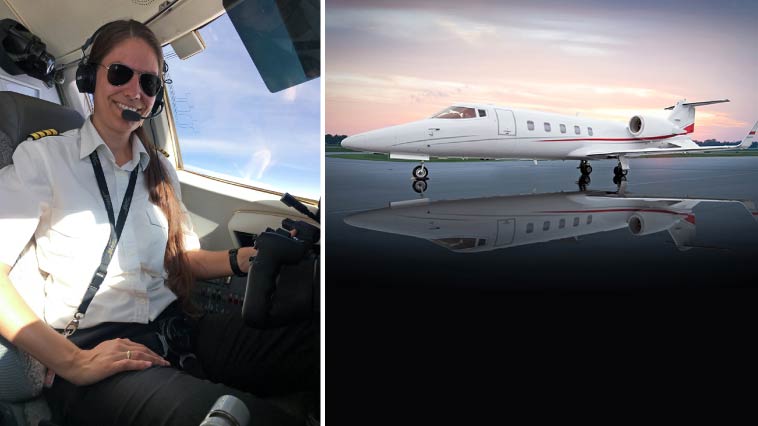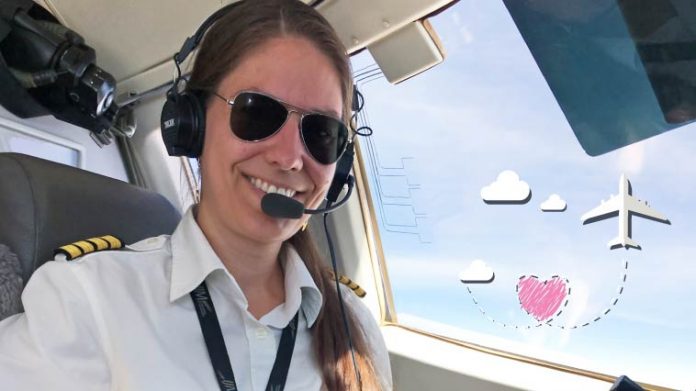Austrian national Sabine has been in Bahrain for two-and-a-half years and is a captain flying a Learjet 60XR for a private company which maintains and operates aircraft on behalf of their owners. Last year she flew around 300 hours, which is a lot for a private airline pilot, and visited cities such as Moscow, Nice and London as well as several out-of-the-way destinations.
But, though always interested in aviation, Sabine didn’t take the conventional route to achieve her dream. She says: “At first I wanted to be a helicopter pilot, but the training costs three times as much. So, I went to school for IT and started to work in that field at the same time as studying for my private pilot’s licence.
“My flight instructor suggested going ahead [to get her commercial licence] because at that time there was a need for pilots. But you need to have a certain number of hours and, of course, that takes time. When I was ready to start looking, there was no more need for pilots!”
Undeterred, Sabine used her IT background to secure a job in flight dispatch at a business jet operator and “I got lucky,” she explains. “It was a new company, just one year old and a joint venture with the company I currently work for, and they agreed to put me on the flight list.”
But, even then, all was not plain sailing – it actually took more than six years for Sabine to get a pilot’s seat.
“The company has to present potential crew to the owners [of the planes] and I was rejected, a lot. Partly because I was a woman but also because I was low on hours. You also need aircraft-specific training, so why [would the owner] invest thousands in that [when there are qualified people available], plus it is more costly to insure planes flown by low-hours pilots.”
 Eventually, she got a call to fly the Learjet 60 classic for a Russian owner and was based in Moscow but, after six months, they decided to change their operating company and she was without a job.
Eventually, she got a call to fly the Learjet 60 classic for a Russian owner and was based in Moscow but, after six months, they decided to change their operating company and she was without a job.
It sounds harsh but Sabine says: “It happens a lot; either owners will change companies or they may change aircraft. You certainly have to update your CV a lot!”
Stints in Lebanon and Luxembourg followed – with two more layoffs, one just before Christmas – before Sabine landed, literally, in Bahrain and went to work for her current owner as a co-pilot.
She continues: “You start out as a co-pilot and becoming a captain takes experience and you have to have a certain number of flying hours. You can be upgraded at 1,500, but that’s very unusual. I was upgraded at 2,000 and that’s early – it’s usually around 3,000 hours. I was very lucky that this owner wanted me to be upgraded and there was a position available.”
Though Sabine’s current position is as much down to perseverance as luck, she comments on the relative scarcity of women in aviation, saying: “Overall, women make up only around three to five per cent of pilots worldwide – that’s in aviation over all airlines. Private airlines are more flexible, so there are probably more. I was recently told that in Austria there are approximately 200 women pilots, apart from in private aviation.”
And, asked why she believes that is, she replies: “I hear over and over again some women say ‘I didn’t even know women could be pilots’! So, they don’t see it as a career option. I’ve had people look into the cockpit and they are shocked.
“It’s also not very family-friendly – I don’t know how I would cope. As soon as you are pregnant, you can’t fly any more because there are high levels of radiation. I know in some countries women do continue to fly, but I think it’s a good rule. But then, once you’re ready to go back to work, you have to get current again, retrain and get certified again. Some airlines offer part-time or put women on short-haul flights but, in business aviation, if you have a rota of three weeks on and one week off, that’s not going to work. I think that’s also a big part of why women don’t go into flying; you’re investing time, energy and money just to drop out.
“For me, business aviation works. It’s more interesting because you never know where you’re going to sleep and you may get to go somewhere you’ve never been before. I always have a bag packed and you have to be prepared because your passenger may decide to travel on [from the initial destination]. I once flew from plus 30? to minus 30? in Russia.
“The best part is that you get to see places that you’d never otherwise see, and the variety, every day is different. Every day you fly, you see the sun above the clouds, there’s no routine.
“For women, it’s challenging but rewarding. I would tell them to at least try it, get some lessons and see. The nice thing about having the licence is that, if you don’t want it as a job, you can still do so much with it. In Europe you can take a plane for a day trip to another country. And there are lots of other opportunities, too, such as cargo flying and aerial photography.”


































